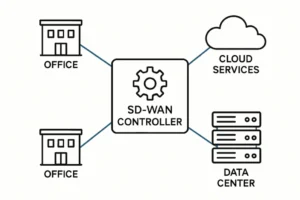What Are Specialty Dental Add-ons?
Specialty dental coverage add-ons go beyond the basics of typical preventive, basic, and major dental procedures, offering benefits that can fill gaps in traditional insurance. Popular add-ons may include orthodontic care for adults, cosmetic dentistry, dental implant coverage, or expanded oral surgery options. Some plans also feature enhanced coverage for gum disease treatment or protection for mouth injuries—issues that standard dental benefits may not fully address. As the dental insurance market evolves, more employers are asking about the value and implementation of these additional features. For a broader comparison of different plan structures and their options, employers can consult https://www1.deltadentalins.com/employers/compare-plans.html for practical side-by-side details.
These add-ons not only future-proof employee benefit packages but can also improve recruitment and retention. They signal current and prospective employees that a company is invested in overall well-being. In a benefits landscape where dental needs constantly evolve, specialty add-ons can keep your offerings relevant and competitive.
Trends in Specialty Dental Benefits
Demand for dental coverage add-ons has increased in response to shifting workforce demographics and evolving dental technologies. Adult orthodontics, for example, is becoming increasingly common—prompted by more adults seeking treatment and advances in clear aligners. Cosmetic enhancements, like whitening and veneers, are no longer just for celebrities; some employees want at least partial support for these services. Gum health and oral cancer screenings have also gained attention as part of comprehensive health strategies. According to a review highlighted in this report by SHRM, employers are strengthening their benefits packages to stand out in a competitive job market, with more than a quarter of surveyed companies expanding their dental offerings.
Digital tools and teledentistry have also started to influence plan features. Some specialty add-ons include virtual second opinions, online dental triage, or enhanced access to specialty care through digital consultation platforms. These features underscore the importance of adapting to employee needs and advancing technology.
The Most Commonly Requested Dental Add-ons
While every workforce is different, some dental add-ons tend to draw the most interest and engagement across industries:
- Orthodontics for adults: This is especially appealing for millennials and Gen Xers who want improved smiles later in life.
- Coverage for dental implants: As the preferred solution for missing teeth, implants can carry a hefty out-of-pocket cost without adequate insurance.
- Periodontal care: Because gum disease is linked to overall health, employers who support periodontal therapy can promote better wellness outcomes.
- Oral surgery and bonus accident coverage: Plans that include additional procedures or protect against mouth injuries reassure employees who participate in sports or have children.
- Cosmetic dentistry options: Even partial coverage for procedures like whitening may improve employee morale and appearance-consciousness in customer-facing roles.
As highlighted in this Forbes Health comparison of dental coverage, the best add-ons fit employee demographics and support immediate needs and long-term oral health. Offering a range of options also signals that the employer values health journeys, not just the lowest cost solutions.
Cost Considerations for Employers
Adding specialty dental options does come with a price, but employers should weigh these costs against the potential for improved employee satisfaction and lower dental-related absenteeism. Coverage for high-ticket items—like orthodontics or implants—may increase premiums, yet can be seen as a valuable recruiting and retention tool. In some cases, the long-term financial benefit can outweigh the initial investment, as preventive and specialized treatments reduce the likelihood of severe dental emergencies that disrupt productivity.
Employers might also consider voluntary add-ons, allowing employees to opt into enhanced features and pay the extra premium. This balances cost-sharing and ensures that employees who value additional coverage have access, while those satisfied with the basics aren’t forced into higher premiums. Clear communication about the value and cost of each add-on helps everyone make informed choices at open enrollment.
Educating Employees and Boosting Utilization
No matter how robust a benefits program is, it fails if employees don’t know about it or aren’t sure when and how to use it. Effective education can include digital guides, Q&A sessions with dental professionals, and clear, jargon-free explanations of coverage differences. Sharing success stories or statistics about specialty dental care utilization can boost employee awareness and participation.
Bringing in external experts for webinars or offering digital “office hours” can also help employees feel confident about selecting add-ons for themselves or their families. Employers demystifying plan details during open enrollment tend to see higher rates of voluntary premium contributions and better year-round benefit usage. This transparency builds trust and empowers employees to make proactive, informed decisions about their dental health.
Evaluating Success: How to Know Your Add-ons Are Working
To ensure specialty dental coverage add-ons deliver value, employers should monitor usage rates, employee feedback, and overall dental health claims trends. Periodic surveys can pinpoint which add-ons are most valued and which need more explanation or adjustment. Claims data can also reveal whether enhanced benefits reduce costly dental emergencies or improve health outcomes.
Staying flexible and open to feedback positions your company to help employees maximize their oral health—and appreciate your investment in their well-being. Regular reviews, clear communication, and a balanced approach allow add-ons to support business goals and employee happiness.
Also read-Unlocking the Mind: Exploring Hypnosis as a Path to Overcome Alcohol Addiction








